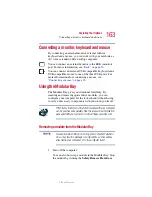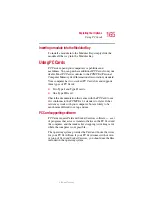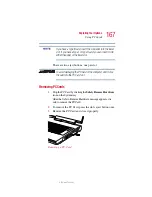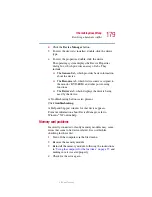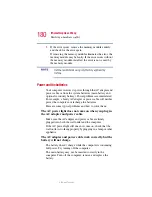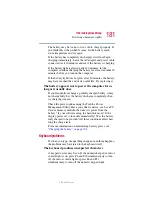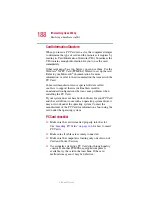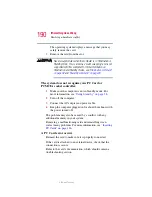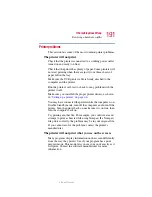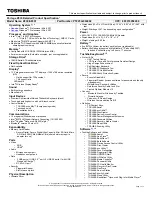
176
If Something Goes Wrong
Resolving a hardware conflict
5.375 x 8.375 ver 2.3
A plan of action
The smooth operation of the system depends on the
interaction of all devices, programs, and features. If the
system or one of its attached devices isn’t working, resolving
the problem can be time-consuming and frustrating.
The recommended procedure for getting multiple devices to
work together is to add and set up one device at a time. After
you add each device, test it to make sure it and all previously
connected devices work.
The device most recently connected to the system is the one
most likely to be causing a hardware conflict.
Resolving hardware conflicts on your own
Computer components need resources to accomplish a task.
A device, such as a disk drive or a modem, needs a channel to
the computer’s Central Processing Unit (CPU). It also needs a
direct channel to the computer’s memory to store information
as it works. These channels of communication are commonly
referred to as system resources.
Direct Memory Access
Similarly, the data required by the device is stored in a
specific place or address in memory called the Direct
Memory Access (DMA). The DMA provides a dedicated
channel for adapter cards to bypass the microprocessor and
access memory directly. If two or more devices use the same
DMA, the data required by one device overwrites the data
required by the other. That may cause a hardware conflict.
Plug and Play
With Plug and Play and the Windows
®
XP operating system,
avoiding hardware conflicts is easy. Plug and Play is a
computer standard that helps the system BIOS (basic input/
output system) and the operating system to automatically
assign resources to Plug and Play-compliant devices. In
Summary of Contents for Satellite P25
Page 232: ...232 5 375 x 8 375 ver 2 3 ...


